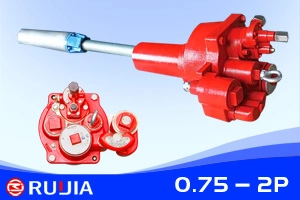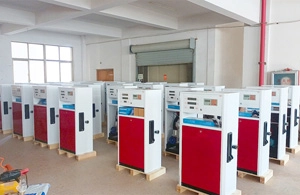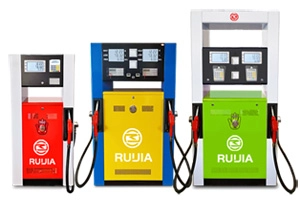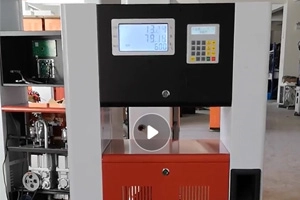- 20+ Years Of History
- 30+ Countries
- 50000 Yearly Production
European Fuel Dispenser Standards
European fuel dispenser standards are governed by a combination of EN (European Norms) and ATEX directives, ensuring safety, accuracy, and environmental compliance. Below is a synthesis of core standards and their requirements:
1. EN 13012:2021
Title: Petrol Filling Stations - Construction and Performance of Automatic Nozzles for Use on Fuel Dispensers
Scope:
Applies to automatic nozzles for dispensing liquid fuels (e.g., petrol, diesel) and aqueous urea solutions at flow rates ≤200 L/min.
Covers safety, environmental, and performance requirements.
Key Requirements:
Leakage Control: Nozzle seals must prevent fuel leakage under pressure (tested at 400 kPa for 30 seconds).
Vapor Recovery: Compatible with Stage II vapor recovery systems (if applicable).
Material Stability: Components must resist corrosion from fuels (tested per ISO 9328).
Electrical Safety: Compliance with EN 60079-14 for explosion-proof wiring .
2. EN 14678-2:2012
Title: LPG Equipment and Accessories for Automotive Filling Stations - Part 2: Components Other Than Dispensers
Focus:
Shear Valves: Mandatory installation to prevent fuel spills during collisions.
Swivels: Ensure leak-proof connections between hoses and dispensers.
Key Requirements:
Shear Valves: Must activate at ≤500 N force to disconnect fuel flow.
Pressure Testing: Components must withstand 1.5× maximum working pressure for 10 minutes .
3. EN 13617-3:2012
Title: Petrol Filling Stations - Part 3: Safety Requirements for Construction and Performance of Swivels
Scope:
Applies to swivels used in fuel dispensers for vehicles, boats, and portable containers.
Key Requirements:
Electrical Safety: Enclosures must meet IP54 protection against dust/water.
Leakage Limits: Internal leakage ≤4 L/hour, external leakage ≤1 L/hour during pressure tests .
4. ATEX Directive 2014/34/EU
Title: Equipment and Protective Systems Intended for Use in Potentially Explosive Atmospheres
Scope:
Mandatory for fuel dispensers in explosive environments (e.g., petrol stations).
Key Requirements:
Equipment Classification:
Zone 1: Devices must be Ex ia (intrinsically safe) or Ex ib (increased safety).
Zone 2: Ex nA (non-sparking) or Ex ec (energy-limited) acceptable.
Marking: CE + Ex symbol (e.g., Ex ia IIB T4) .
5. EN 60079-14:2019
Title: Explosive Atmospheres - Part 14: Electrical Installations Design, Selection, and Erection
Focus:
Guidelines for installing explosion-proof electrical systems in fueling stations.
Key Requirements:
Wiring: Use of armored cables for hazardous areas.
Grounding: Resistance ≤10 Ω for static discharge prevention.
6. EN 12891:2017
Title: Petrol Filling Stations - Safety Requirements for Fuel Dispensers
Scope:
Comprehensive safety standards for dispenser design and operation.
Key Requirements:
Anti-Tampering: Mandatory self-locking mechanisms to prevent unauthorized calibration.
Display Accuracy: Fuel quantity must be legible from 2 m distance under sunlight.
7. EN 16709:2015
Title: Automotive Fuels - High FAME Diesel (B20 and B30) - Requirements and Test Methods
Scope:
Applies to biodiesel blends (B20/B30) in dispensers.
Key Requirements:
Corrosion Resistance: Components must pass 720-hour salt spray tests.
Material Compatibility: Hoses and seals must resist biodiesel degradation.
Compliance and Certification
CE Marking: Mandatory for all fuel dispensers sold in the EU.
ATEX Certification: Required for explosion-proof components.
Testing Bodies: Accredited labs (e.g., TÜV, SGS) perform conformity assessments.
Accessing Standards
Official Sources:
Purchase from CEN (European Committee for Standardization) or BSI Group.
Third-Party Translations:
Engage ISO-certified translators for technical accuracy (e.g., terms like "Ex ia IIB T4").
China fuel dispenser (https://www.cnruijia.com),professional fuel dispenser manufacturer.
Key Differences from Non-European Standards
| Aspect | EN/ATEX Standards | Non-European (e.g., US/China) |
|---|---|---|
| Explosion Protection | ATEX directive with zone classifications | NEC or GB/T 22380 (simplified zones) |
| Material Testing | Focus on fuel compatibility (e.g., biodiesel) | Emphasis on mechanical durability |
| Certification | CE + ATEX marks | UL, CPA, or CCC |
For detailed implementation, refer to the full texts of EN 13012, EN 14678-2, and ATEX 2014/34/EU.







